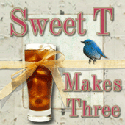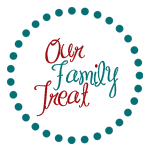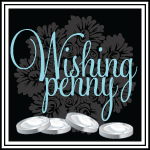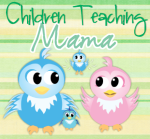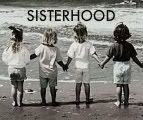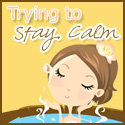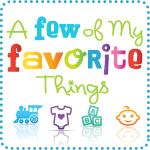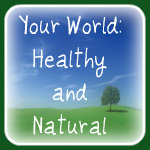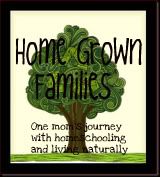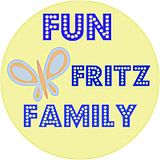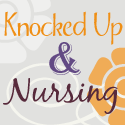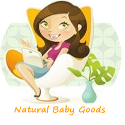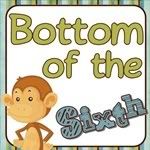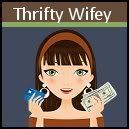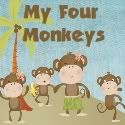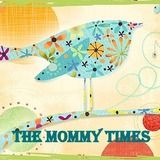Quickly before delving into Organic Food of pt 3 Green in the Kitchen series, I must share this good news. I bought myself a Moop! 'A Mop?' You ask. No, a Moop! Also known as, a bag I have admitedly been coveting for oh, a year and a half at least. It was an early Mother's Day present to myself(along with a handmade coin purse that is a.d.o.r.a.b.l.e.) And it might be used but hey, it's new to me and I'm so happy to finally enjoy one in real life. Oddly enough, another church mom has the same bag(different color!) Always a nice surprise to find another person that knows what Etsy is all about. moop.etsy.com
It's business time!
Organic Food
If you're new to organic food it may seem a little daunting at first. Higher prices being the major hurdle. The trick is knowing what is and isn't worth getting and knowing where to look. Many bigger retailers like Walmart and Target have started carrying their own organic store brand. These can save you some money over the more expensive name brand items. Farmers' Markets are another fantastic place to buy organic AND local. Nothing like cutting out the middle man and bring food home directly from the source! There are markets all over the place, most neighborhoods/suburbs have their own so you don't have to go downtown or to the boonies to find one. Also check around for natural food stores like Campbells. And of course being the internet age, there is a website that can help you wherever you are: http://www.localharvest.org/. They list Online Stores, Farms, CSAs, Farmers' Markets, Restaurants and Grocery/Coops. Pretty slick, check it out!
So just what is worth getting that is organic? Starting off, Meat and Dairy are two of the top recommended things to do if possible. Dairy includes milk, butter and yogurt. Meat includes eggs. The meat isn't at risk to high pesticide exposure but more so because it has the biggest environmental impact. This is because of the conventional methods used to raise animals, using hormones to speed growth, antibiotics to resist disease and pesticides and fertilizers to grow the grain needed to feed them. One story I think about often is what my husband saw while serving his mission in Brazil for two years. The girls there hit puberty much, much earlier than girls here due to the hormones added to their chicken. Even here my mother(who is a teacher), says it is occurring earlier than ever.
Dairy is mostly of note as it is a big part of kids' diets. Pesticides have been detected in human breast milk so of course it is going to be found in dairy products, as well. Most of the 'bad stuff' gets excreted in the fat that is used in milk, butter and yogurt. In recent studies it has also been found that organic milk/dairy products contain significantly more amounts of vitamins than conventional dairy products. They are now recommending pregnant/nursing women to drink organic milk as much as possible.
Now for the veggies and fruit. According to the Environmental Working Group (EWG), consumers can reduce pesticide exposure by 80% by avoiding the most contaminated fruits and vegetables. The easiest way to keep it all straight is to remember a few key things: produce with thin skin and stems creating an indentation in the top are most likely high in pesticide. This would include peaches, strawberries, apples, bell peppers, celery, pears, tomatoes, nectarines, grapes and cherries. The thin skin provides little barrier to the chemicals and the stem fruits have pooling of chemicals around the stems which allows for more absorption. Leafy greens (lettuce, spinach) and root crops such as carrots and potatoes are also recommended to buy organic.
I know, it's a lot. But never fear, because there is another rule of thumb if you don't have a money tree in your backyard. Buy organic what you eat a lot of. An apple every day? Get organic. Rarely get through a thing of yogurt before it expires? Don't buy organic. Simple.
I'll also list quickly things not to waste your money on buying organic: onion, avocado, sweet corn, pineapple, mango, asparagus, sweet peas, kiwis, cabbage, eggplant, papaya, watermelon, broccoli, sweet potatoes, tomatoes*. *debatable.
In general, being smart about what's worth buying organic and cutting processed foods as much as possible from your diet will equal a happy pocketbook and healthy body. Lastly, the cheapest way to get organic? Grow your own. And no excuses about a lack of yard or time- container gardening and square foot gardening are easy for even the level 0 and lazy gardeners. Check out my blog midwestbarefootgardener.blogspot.com in a couple weeks as I start to chronicle the joys and struggles of gardening in the Midwest!
Oh yes, and save those food scraps (minus meat and and dairy) for the compost pile!
Monday, April 27, 2009
Green in the Kitchen pt 3 Organic Food
- Share this on del.icio.us
- Digg this!
- Stumble upon something good? Share it on StumbleUpon
- Share this on Reddit
- Add this to Google Bookmarks
- Tweet This!
- Share this on Facebook
- Share this on Mixx
- Subscribe
- Buzz up!
- Share this on Linkedin
- Submit this to DesignFloat
- Share this on Technorati
- Submit this to Script & Style
- Post this to MySpace
- Share this on Blinklist
- Share this on FriendFeed
- Seed this on Newsvine
Widget by Css Reflex | TutZone
Monday, April 13, 2009
Green in the Kitchen pt 2 leftovers, composting and recycling
Happy belated Easter to all! We had a wonderful Easter/birthday weekend for our daughter full of family(and of course presents and candies). In keeping with our 'green' theme, I had a moment of brilliant thought and used a handmade dolly moses basket(from Anklebiters on Hyenacart.com) for my daughter's Easter basket. It was going to be a birthday present but we realized now is the time for a trike so that was her birthday present instead. She loves to carry it around with Becca in it and tuck her dolly in for a nap.
On to Kitchen Green!
Couple leftover things from the previous post that well, deal with leftovers. Ziplock bags and Saran wrap/foil. Sometimes, there's just no way around using them. So I'm all for it, just on a reduced and recycled basis.
For ziplock bags/thing needing saran wrap we try to use rubbermaid or tupperware type containers with lids instead. Everything from snacks to leftovers in the fridge to taking lunch to work. We have a handy rubbermaid set from Target that came with an organizer and 3 sizes of containers for 20$. It is used every single day. Two of the containers use the same size lids, even better. Another option is prex dishes. A lot of them come now with lids, too, which is pretty nifty. Ideally I'd like to use those more, but the rubbermaid is a bit easier to grab at the moment. When they are worn out, I'll probably use more pyrex and save plastic stuff for travel containers. If you need to use a ziplock bag, try to wash it out, dry and reuse it(do not reuse bags that have had meat in them).
A new product sold on the hyenacart.com site(I swear I don't get paid to plug them in!) are Foilers. Here's the scoop on this cool item from http://hyenacart.com/thefoilersshop/
'The Story of Foilers
One evening in 2004, after a day of diaper sewing, I needed to cover some leftovers in a 9 x 13 inch pan. I was out of plastic wrap. I didn't have enough tin foil. Then, I had a brainstorm. After a little measuring, cutting, and sewing, the first Foiler was born. It worked perfectly! So, in the days soon after, I worked to develop more sizes. I tested these on my friends and family and everyone loved their Foilers.
What Foilers Are
Foilers are an earth friendly innovation--an alternative to using plastic wrap or foil when storing food. They are made of a layer of waterproof PUL fabric, a layer of woven cotton print fabric, elastic binding on the edges and an elastic pull tab.
Over the years, I have had special requests to make Foilers as large as a wheelbarrow, but the five standard sizes will easily fit just about all of your dishes.'
Kitchen compost and recycling:
I grew up with my mom composting things from our kitchen. She used a gallon ice cream bucket with a lid and put it on the counter or under the kitchen sink. During the summer it was emptied frequently so it rarely if ever got smelly! I know, not the most glamorous vessel out there but if you're really wanting to go ultra recycling/green, use a similar container from your home. (We don't eat ice cream by the gallon so that wouldn't work for us). We opted for a little more style and got a stainless steel bucket with lid and handle. It's stood up to plenty abuse and looks as nice as a compost bucket can. Seeing as I have nil counter space, it generally goes under the kitchen sink.
'But wait, what the heck goes in it?' Oh yeah, I suppose that would help to know. Summed up, just about anything from your kitchen save for meat, bones, fat, grease and milk products. Also pits can't be composted if I remember correctly. But the end of the loaf of bread you hate to eat or moldy bread? Throw it in there. Egg shells? The best! Veggies you let spoil, cuttings from veggies and fruits, banana peels, coffee grinds, tea bags, even lint and newspaper! Throw it all in! The only thing you want to keep in mind is the size of most things. Example, cantalope(musk mellon) rinds. Those need to be cut up into large chunks. Newspaper should be shredded into strips. Banana peels, however, can go right in as is. You'll be surprised just how much you accumulate that you Were throwing into the trash!
This is just the tip of the iceberg in composting and we'll get into what to do when your bucket is full shortly. In the meantime, here's a link to some different types of fancy containers you could buy: http://www.gardeners.com/Compost-Crocks/CompostPails_Cat,default,sc.html
Last up for the day: Recycling
My trash can is in the kitchen, so that's how this ended up in this section(really little house!). Seeing as most places have a great recycling program now, it feels a bit unneccessary but just in case we'll talk briefly about it.
The best way to assess how well you are doing with recycling is to think about what you have in your hand as you are walking to the trash can. What is it? Can it be recycled?
Glass, aluminum cans, foil, paper, metal cans, paper bags, cardboard, junk mail, shredded paper, phone books, food boxes, plastic containers and more can all be recycled. That's a lot! And that's a lot that gets thrown away every day instead of recycled. So what do you do with this recyclable material now that it's in your hand and you don't want to put it in the trash?
Make a system that works for you! A paper bag under the counter works great. Maybe you have room for a special bin next to the kitchen in a mud or wash room. Seeing as my kitchen has a walkway of 3x9, space is a premium. What we've done is kept a plastic container(old recycling bin) just outside the side door which is just off the kitchen. Sometimes I'm lazy and make a little pile on the stove before making that looong trip to open the door and toss it outside. But when the outside bin is full I am able to empty it into the larger bin that is used by the city in their recycling program. We are really lucky to have a 'Curbit!' program so I don't have to drive it anywhere like my parents did when we were growing up. Even if you don't have a convenient program like this, it is still important to do as much as you can and make recycling a priority.
There are some things that shouldn't be recycled: frozen food boxes(has to do with a coating on the cardboard) pizza boxes, hazardous chemical containers, yard clippings/leaves, etc. Check with the city in your area to see what they cannot take.
Clear as mud? I hope so! Happy almost over Monday.
On to Kitchen Green!
Couple leftover things from the previous post that well, deal with leftovers. Ziplock bags and Saran wrap/foil. Sometimes, there's just no way around using them. So I'm all for it, just on a reduced and recycled basis.
For ziplock bags/thing needing saran wrap we try to use rubbermaid or tupperware type containers with lids instead. Everything from snacks to leftovers in the fridge to taking lunch to work. We have a handy rubbermaid set from Target that came with an organizer and 3 sizes of containers for 20$. It is used every single day. Two of the containers use the same size lids, even better. Another option is prex dishes. A lot of them come now with lids, too, which is pretty nifty. Ideally I'd like to use those more, but the rubbermaid is a bit easier to grab at the moment. When they are worn out, I'll probably use more pyrex and save plastic stuff for travel containers. If you need to use a ziplock bag, try to wash it out, dry and reuse it(do not reuse bags that have had meat in them).
A new product sold on the hyenacart.com site(I swear I don't get paid to plug them in!) are Foilers. Here's the scoop on this cool item from http://hyenacart.com/thefoilersshop/
'The Story of Foilers
One evening in 2004, after a day of diaper sewing, I needed to cover some leftovers in a 9 x 13 inch pan. I was out of plastic wrap. I didn't have enough tin foil. Then, I had a brainstorm. After a little measuring, cutting, and sewing, the first Foiler was born. It worked perfectly! So, in the days soon after, I worked to develop more sizes. I tested these on my friends and family and everyone loved their Foilers.
What Foilers Are
Foilers are an earth friendly innovation--an alternative to using plastic wrap or foil when storing food. They are made of a layer of waterproof PUL fabric, a layer of woven cotton print fabric, elastic binding on the edges and an elastic pull tab.
Over the years, I have had special requests to make Foilers as large as a wheelbarrow, but the five standard sizes will easily fit just about all of your dishes.'
Kitchen compost and recycling:
I grew up with my mom composting things from our kitchen. She used a gallon ice cream bucket with a lid and put it on the counter or under the kitchen sink. During the summer it was emptied frequently so it rarely if ever got smelly! I know, not the most glamorous vessel out there but if you're really wanting to go ultra recycling/green, use a similar container from your home. (We don't eat ice cream by the gallon so that wouldn't work for us). We opted for a little more style and got a stainless steel bucket with lid and handle. It's stood up to plenty abuse and looks as nice as a compost bucket can. Seeing as I have nil counter space, it generally goes under the kitchen sink.
'But wait, what the heck goes in it?' Oh yeah, I suppose that would help to know. Summed up, just about anything from your kitchen save for meat, bones, fat, grease and milk products. Also pits can't be composted if I remember correctly. But the end of the loaf of bread you hate to eat or moldy bread? Throw it in there. Egg shells? The best! Veggies you let spoil, cuttings from veggies and fruits, banana peels, coffee grinds, tea bags, even lint and newspaper! Throw it all in! The only thing you want to keep in mind is the size of most things. Example, cantalope(musk mellon) rinds. Those need to be cut up into large chunks. Newspaper should be shredded into strips. Banana peels, however, can go right in as is. You'll be surprised just how much you accumulate that you Were throwing into the trash!
This is just the tip of the iceberg in composting and we'll get into what to do when your bucket is full shortly. In the meantime, here's a link to some different types of fancy containers you could buy: http://www.gardeners.com/Compost-Crocks/CompostPails_Cat,default,sc.html
Last up for the day: Recycling
My trash can is in the kitchen, so that's how this ended up in this section(really little house!). Seeing as most places have a great recycling program now, it feels a bit unneccessary but just in case we'll talk briefly about it.
The best way to assess how well you are doing with recycling is to think about what you have in your hand as you are walking to the trash can. What is it? Can it be recycled?
Glass, aluminum cans, foil, paper, metal cans, paper bags, cardboard, junk mail, shredded paper, phone books, food boxes, plastic containers and more can all be recycled. That's a lot! And that's a lot that gets thrown away every day instead of recycled. So what do you do with this recyclable material now that it's in your hand and you don't want to put it in the trash?
Make a system that works for you! A paper bag under the counter works great. Maybe you have room for a special bin next to the kitchen in a mud or wash room. Seeing as my kitchen has a walkway of 3x9, space is a premium. What we've done is kept a plastic container(old recycling bin) just outside the side door which is just off the kitchen. Sometimes I'm lazy and make a little pile on the stove before making that looong trip to open the door and toss it outside. But when the outside bin is full I am able to empty it into the larger bin that is used by the city in their recycling program. We are really lucky to have a 'Curbit!' program so I don't have to drive it anywhere like my parents did when we were growing up. Even if you don't have a convenient program like this, it is still important to do as much as you can and make recycling a priority.
There are some things that shouldn't be recycled: frozen food boxes(has to do with a coating on the cardboard) pizza boxes, hazardous chemical containers, yard clippings/leaves, etc. Check with the city in your area to see what they cannot take.
Clear as mud? I hope so! Happy almost over Monday.
- Share this on del.icio.us
- Digg this!
- Stumble upon something good? Share it on StumbleUpon
- Share this on Reddit
- Add this to Google Bookmarks
- Tweet This!
- Share this on Facebook
- Share this on Mixx
- Subscribe
- Buzz up!
- Share this on Linkedin
- Submit this to DesignFloat
- Share this on Technorati
- Submit this to Script & Style
- Post this to MySpace
- Share this on Blinklist
- Share this on FriendFeed
- Seed this on Newsvine
Widget by Css Reflex | TutZone
Monday, April 6, 2009
Green in the Kitchen pt 1 cloth
Moving on from kid stuff! With probably more side notes as we go along and I think of things. Anyways.
Green in the Kitchen! Pt 1: cloth
Alot of being 'green' involves reusing which inevitably involves something you can wash. So cloth is a big part of our 'green' daily life. Pretty much the easiest way to consider what things you could change is to think of the things you throw away. Disposable plates, silverware, cups, napkins, towels, ziplock bags, saran wrap, etc are a few of the things I can think of!
First up: plates, silverware, cups.
Yep, they're convenient. Especially if you don't have a dishwasher(like me!). But part of being green means giving up the convenient. Party hardy? Use the real stuff. Afraid of it breaking? Get reuseable plastic picnic type dishes and cups. I'll admit, I still have some throw away items in the basement and it's the same leftover stuff I've had since hosting the Family Christmas back in 06. Once in a while I think to use them, but usually not. Be on the lookout at Target for those melamine dishes and such we should be seeing soon as picnic weather fast approaches!
Napkins and towels:
Napkins are probably the easiest to switch to cloth. You can use all sorts of things. Buy nice ones in the store, make your own out of material you have at home(or clearance stuff at the fabric store!). We use two layer flannel for the most part. Some I made, some I bought. We have a pretty big stack and I use them often. (No surprise seeing as I have 5 kids 3 1/2 and under for 50 hours a week) I do have a set of nice store bought ones for company, but rarely remember to get them out and end up just using the day to day ones. These wipe hands, faces, noses, tables, etc. They are really great for kids as the cloth will not make tiny runny noses raw from wiping like paper kleenex will. The kids also don't mind the dreaded face wipe as much when they are warm and damp.
Paper towels were a little more difficult to switch from if only for the cleaning and bacon grease kind of things. But I decided one day it was my last roll of paper towels and I just would figure it out when they were gone! It's been close to a year now since I've run out and we haven't bought more, yet. For cleaning I have a special pile of towels that I make sure to run through a sanitization wash after using. Bacon grease? Got a little creative. I use the edge of a food box (like mac n cheese) to scrape into the waste basket or I save up fast food napkins to use in emergencies(broken glass, etc). I suppose if you just pour your hot grease into a can that negates the need for the whole scraping thing. Not sure why I've never gotten into the habit of doing that?
Sponges:
You could use regular wash rags in place of sponges but I prefer knit scrubbers out of cotton yarn. These give you a little more scrubbing texture as opposed to a soft cloth. I do have some cloth napkins with a terry side that work well in a pinch. Either way, it's much easier to remember to switch out a washable item then it is to toss a sponge after it's a giant germ motel. No worries about 'Oh, rats, I ran out of sponges!' Just grab another clean one and move on!
Bibs:
I don't think anyone uses disposable bibs so this is a non-issue. But on a side note, I've become a big fan of old fashioned flat cloth diapers tied at the back for certain messy meals or younger kids. They cover a bigger area and they can't be pulled off! Once used for burp rags in our home, these flats are now mainly used as bibs. When we're done with bibs, they'll be cleaning cloths!
Organization:
I have a shelf in my pantry dedicated to kitchen type cloth. It's in a spot easy to reach and see. If you have more than 3 drawers in your kitchen(seriously, that's all I have), a drawer would work great, too! For dirty stuff, I keep a little basket to toss things into and carry it to the basement when full. I'd love to put it under the sink but don't have space there at the moment so it's just by my fridge on the floor.
That's all I can think of for kitchen cloth at the moment. If there's something else you would like to add please let me know!
Green in the Kitchen! Pt 1: cloth
Alot of being 'green' involves reusing which inevitably involves something you can wash. So cloth is a big part of our 'green' daily life. Pretty much the easiest way to consider what things you could change is to think of the things you throw away. Disposable plates, silverware, cups, napkins, towels, ziplock bags, saran wrap, etc are a few of the things I can think of!
First up: plates, silverware, cups.
Yep, they're convenient. Especially if you don't have a dishwasher(like me!). But part of being green means giving up the convenient. Party hardy? Use the real stuff. Afraid of it breaking? Get reuseable plastic picnic type dishes and cups. I'll admit, I still have some throw away items in the basement and it's the same leftover stuff I've had since hosting the Family Christmas back in 06. Once in a while I think to use them, but usually not. Be on the lookout at Target for those melamine dishes and such we should be seeing soon as picnic weather fast approaches!
Napkins and towels:
Napkins are probably the easiest to switch to cloth. You can use all sorts of things. Buy nice ones in the store, make your own out of material you have at home(or clearance stuff at the fabric store!). We use two layer flannel for the most part. Some I made, some I bought. We have a pretty big stack and I use them often. (No surprise seeing as I have 5 kids 3 1/2 and under for 50 hours a week) I do have a set of nice store bought ones for company, but rarely remember to get them out and end up just using the day to day ones. These wipe hands, faces, noses, tables, etc. They are really great for kids as the cloth will not make tiny runny noses raw from wiping like paper kleenex will. The kids also don't mind the dreaded face wipe as much when they are warm and damp.
Paper towels were a little more difficult to switch from if only for the cleaning and bacon grease kind of things. But I decided one day it was my last roll of paper towels and I just would figure it out when they were gone! It's been close to a year now since I've run out and we haven't bought more, yet. For cleaning I have a special pile of towels that I make sure to run through a sanitization wash after using. Bacon grease? Got a little creative. I use the edge of a food box (like mac n cheese) to scrape into the waste basket or I save up fast food napkins to use in emergencies(broken glass, etc). I suppose if you just pour your hot grease into a can that negates the need for the whole scraping thing. Not sure why I've never gotten into the habit of doing that?
Sponges:
You could use regular wash rags in place of sponges but I prefer knit scrubbers out of cotton yarn. These give you a little more scrubbing texture as opposed to a soft cloth. I do have some cloth napkins with a terry side that work well in a pinch. Either way, it's much easier to remember to switch out a washable item then it is to toss a sponge after it's a giant germ motel. No worries about 'Oh, rats, I ran out of sponges!' Just grab another clean one and move on!
Bibs:
I don't think anyone uses disposable bibs so this is a non-issue. But on a side note, I've become a big fan of old fashioned flat cloth diapers tied at the back for certain messy meals or younger kids. They cover a bigger area and they can't be pulled off! Once used for burp rags in our home, these flats are now mainly used as bibs. When we're done with bibs, they'll be cleaning cloths!
Organization:
I have a shelf in my pantry dedicated to kitchen type cloth. It's in a spot easy to reach and see. If you have more than 3 drawers in your kitchen(seriously, that's all I have), a drawer would work great, too! For dirty stuff, I keep a little basket to toss things into and carry it to the basement when full. I'd love to put it under the sink but don't have space there at the moment so it's just by my fridge on the floor.
That's all I can think of for kitchen cloth at the moment. If there's something else you would like to add please let me know!
- Share this on del.icio.us
- Digg this!
- Stumble upon something good? Share it on StumbleUpon
- Share this on Reddit
- Add this to Google Bookmarks
- Tweet This!
- Share this on Facebook
- Share this on Mixx
- Subscribe
- Buzz up!
- Share this on Linkedin
- Submit this to DesignFloat
- Share this on Technorati
- Submit this to Script & Style
- Post this to MySpace
- Share this on Blinklist
- Share this on FriendFeed
- Seed this on Newsvine
Widget by Css Reflex | TutZone
Sunday, April 5, 2009
Side note: Car Seat safety for infants and up
About a year ago in one of my cloth diapering forums, I came across a very heated conversation on extended rearfacing. 'What the heck is extended rearfacing? Toddlers stay rearfacing in their carseats? That is so weird and has to be uncomfortable!' But seeing how passionate(read: crazy) these pro-e.rearfacing people were got me curious. And you can see where this is going. I googled and researched and talked to hubby and thought and thought and read and read until I realized, it actually made a lot of sense. Hubby was rather resistant as he thought she would be uncomfortable when her legs got long. I requested he research it before coming to a decision. Aside from reading some of the things I sent him, he never did, so that settled it. At first he negotiated to 18months. Here we are, a few days away from the number 2 mark and guess what? We are still rearfacing and will be until she maxes out her seat's limits. Fitting then, the AAP finally updated their own recommendations: http://aapnews.aappublications.org/cgi/content/full/30/4/12-a?rss=1
So now I rest assured it is not just a crazy cloth diaper hippie thing, we were just ahead of the game.
Car Seat safety doesn't end at 2 or the convertible seat's max limits, either. Check out the Kyle David Miller Foundation: http://www.kyledavidmiller.org/pages/4211/Car_Seat_Safety:_5-point_Harness_is_Safest.html on why children are safest in 5pt harnesses. Boosters should not be used until children are on average 7 years old. Don't believe me? Do the research. Watch the videos of the children whos' lives could have been saved by simple knowledge. I know a 5pt harness that fits older children doesn't come as cheap as a 15$ booster. The obvious question is, just how much is your child worth to you?
So now I rest assured it is not just a crazy cloth diaper hippie thing, we were just ahead of the game.
Car Seat safety doesn't end at 2 or the convertible seat's max limits, either. Check out the Kyle David Miller Foundation: http://www.kyledavidmiller.org/pages/4211/Car_Seat_Safety:_5-point_Harness_is_Safest.html on why children are safest in 5pt harnesses. Boosters should not be used until children are on average 7 years old. Don't believe me? Do the research. Watch the videos of the children whos' lives could have been saved by simple knowledge. I know a 5pt harness that fits older children doesn't come as cheap as a 15$ booster. The obvious question is, just how much is your child worth to you?
- Share this on del.icio.us
- Digg this!
- Stumble upon something good? Share it on StumbleUpon
- Share this on Reddit
- Add this to Google Bookmarks
- Tweet This!
- Share this on Facebook
- Share this on Mixx
- Subscribe
- Buzz up!
- Share this on Linkedin
- Submit this to DesignFloat
- Share this on Technorati
- Submit this to Script & Style
- Post this to MySpace
- Share this on Blinklist
- Share this on FriendFeed
- Seed this on Newsvine
Widget by Css Reflex | TutZone
Friday, March 27, 2009
Our 'Green' toys!

This is Becca, our HillCountry Dollmaker doll that Santa brought this year.

This is our kids' table and chairs with a couple Melissa and Doug toys. The kids love the abacus!

The horse, gnome home and gnomes are grom greenmountainwoolies on Etsy.com. The wood blocks were made by a company sadly no longer in business.

The wooden cars are from a store on hyenacart.com, as well as the I-Spy bag and purple bean bag(there are two but I can only find 1!)

The colorful things you see are the playsilks. They have all kinds of beautiful colors. The animal puzzle, train whistle and shape sorter were bought from a local fair trade shop. The animal puzzle and shape sorter are made by Montgomery Schoolhouse http://www.montgomeryschoolhouse.com/.

These are our organic baby toys. All things from Under the Nile fruits to plenty of Haba toys, more greenmountainwoolies on Etsy and a few others I'm not sure where I found.
Lastly, handknit wool play food! We have a rather large collection. Unfortunately the cat seems to enjoy hiding them, too. Tiffany at Fair Trade Family did most of our items, she is on Hyenacart.com.
- Share this on del.icio.us
- Digg this!
- Stumble upon something good? Share it on StumbleUpon
- Share this on Reddit
- Add this to Google Bookmarks
- Tweet This!
- Share this on Facebook
- Share this on Mixx
- Subscribe
- Buzz up!
- Share this on Linkedin
- Submit this to DesignFloat
- Share this on Technorati
- Submit this to Script & Style
- Post this to MySpace
- Share this on Blinklist
- Share this on FriendFeed
- Seed this on Newsvine
Widget by Css Reflex | TutZone
Greening Your Baby
Everyone wants what is best for their kids. No one wakes up in the morning thinking, ‘Gee, how can I squash my kid’s imagination today?’ or ‘How can I expose her to more chemicals in our home?’ If the things I talk about aren’t for you, no problem. I trust every parent to make the best choices for their family, as I hope other parents trust me to make mine. The following are some other things baby related that we do in our home:
In the nursery:
I read a great article about a year ago talking through the various options people can choose to go ‘green’ for their baby. The author stated at the end, if you do nothing else, at the very least get an organic mattress. That stuck, and a few months later we had our first organic baby mattress. Go and google them. I’ll wait. …. Sticker shock? Yeah, I’ll say. They are expensive. And there’s no 5$ organic baby mattress you’ll find on Craigslist.com. As I attempt to also be frugal, the price was initially a huge stumbling block in my mind. Not only was I questioning whether it was necessary, but also if I could even manage to make the right decision seeing as how I wouldn’t be able to just buy another one should I not like the first. I’m all about doing it right the first time as much as possible! So what did I do? Well I googled the heck out of
‘baby organic mattress’ until I felt comfortable with the whys and the whats. Summed up:
Why did I buy an organic mattress? Because I never knew all of the chemicals I was exposing my sweet baby to. And it just makes sense considering the amount of time they spend sleeping. On a scale of 1 to 10 for things that may actually make a huge difference in my child’s health early on, this one is pretty far up there.
What did I buy?
http://www.daxstores.com/baby-cribs--mattresses-and-bedding-organic-baby-crib-mattresses.html
I purchased our mattress from Dax stores. They are out of Nebraska, which is fairly close to us. Free shipping over 100$ was a nice thing, too! I also purchased a wool protector/puddle pad and organic fitted sheet. I have been happy with everything I’ve gotten from them to date.
Of course if you do get the organic mattress, it makes sense to get the organic bedding as well. Personally, I say skip everything but the crib skirt, fitted sheets and blanket for swaddling. For a baby, you don’t need the crib bumper, duvet cover, decorative pillows, etc. Which by the time you’ve purchased all the extra stuff it’d cost the same as getting organic bedding anyway.
In the playroom:
After all of the problems with toys made in China, I decided to phase out our plastic toys. Thankfully there was a great response to the China issue and more non-plastic, non-toxic toys became readily available everywhere! We have several Melissa and Doug items, although I’m not so thrilled with how the color rubs off of their toys(like a crayon, know what I mean?) Speaking of crayons, M & D have some awesome toddler crayons I highly recommend! From Amazon.com I found play kitchen dishes made out of recycled milk jugs, how cool is that? Made from recycled materials, non-toxic and food safe! (See http://www.greentoys.com/) We also got into many hand made items. Our play kitchen food is all hand knit from wool yarn and stuffed with clean wool. We have hand-dyed play silks for imaginative play (great for peekaboo, dolly blankets, capes, whatever. Kids like the texture of the silk). Wooden blocks, cars, kids’ table and chairs, dolly bed, etc. We have 7 plastic toys left. Yep, 7. A few old little tykes things, ride on toy, kiddie laptop and bilibo. (Granted, not counting the outside toys)
Some things can cost a lot. But if you’re smart they don’t have to. Our kids’ table and chairs I posted a ‘wanted’ on Craig list and scored an Amish made set that should outlast any and all kids. Same goes for the toddler rocking chair. Our Melissa and Doug were bought through Amazon.com, though we now have a local store that carries a nice selection! For the handmade items, they were purchased through Hyenacart.com and Etsy.com. Fair Trade Family did almost all of my play food and they are on Hyenacart. Tell Tiffany I sent you! The one thing I saved up for and splurged on was Nina’s Santa present, a handmade doll done in the Waldorf style From HillCountry Dollmaker (also on Hyencart.com). It was fun getting to customize the doll just the way I wanted, down to her blue eyes and blonde baby pigtail hair!
(I will add pictures soon.)
There are many other areas to consider like skin care and clothing. I won't get into them as these things I think are easy to find now at your neighborhood Target/Walmart/Whatever. I would also like to get into organic food, but I’ll save that for another day, another post. In the meantime, here are a few things to read. Google up a storm!
http://greenliving.about.com/od/greenfamily/tp/Green-Baby.htm
http://www.foxnews.com/story/0,2933,314741,00.html
http://www.baboobaby.com/
In the nursery:
I read a great article about a year ago talking through the various options people can choose to go ‘green’ for their baby. The author stated at the end, if you do nothing else, at the very least get an organic mattress. That stuck, and a few months later we had our first organic baby mattress. Go and google them. I’ll wait. …. Sticker shock? Yeah, I’ll say. They are expensive. And there’s no 5$ organic baby mattress you’ll find on Craigslist.com. As I attempt to also be frugal, the price was initially a huge stumbling block in my mind. Not only was I questioning whether it was necessary, but also if I could even manage to make the right decision seeing as how I wouldn’t be able to just buy another one should I not like the first. I’m all about doing it right the first time as much as possible! So what did I do? Well I googled the heck out of
‘baby organic mattress’ until I felt comfortable with the whys and the whats. Summed up:
Why did I buy an organic mattress? Because I never knew all of the chemicals I was exposing my sweet baby to. And it just makes sense considering the amount of time they spend sleeping. On a scale of 1 to 10 for things that may actually make a huge difference in my child’s health early on, this one is pretty far up there.
What did I buy?
http://www.daxstores.com/baby-cribs--mattresses-and-bedding-organic-baby-crib-mattresses.html
I purchased our mattress from Dax stores. They are out of Nebraska, which is fairly close to us. Free shipping over 100$ was a nice thing, too! I also purchased a wool protector/puddle pad and organic fitted sheet. I have been happy with everything I’ve gotten from them to date.
Of course if you do get the organic mattress, it makes sense to get the organic bedding as well. Personally, I say skip everything but the crib skirt, fitted sheets and blanket for swaddling. For a baby, you don’t need the crib bumper, duvet cover, decorative pillows, etc. Which by the time you’ve purchased all the extra stuff it’d cost the same as getting organic bedding anyway.
In the playroom:
After all of the problems with toys made in China, I decided to phase out our plastic toys. Thankfully there was a great response to the China issue and more non-plastic, non-toxic toys became readily available everywhere! We have several Melissa and Doug items, although I’m not so thrilled with how the color rubs off of their toys(like a crayon, know what I mean?) Speaking of crayons, M & D have some awesome toddler crayons I highly recommend! From Amazon.com I found play kitchen dishes made out of recycled milk jugs, how cool is that? Made from recycled materials, non-toxic and food safe! (See http://www.greentoys.com/) We also got into many hand made items. Our play kitchen food is all hand knit from wool yarn and stuffed with clean wool. We have hand-dyed play silks for imaginative play (great for peekaboo, dolly blankets, capes, whatever. Kids like the texture of the silk). Wooden blocks, cars, kids’ table and chairs, dolly bed, etc. We have 7 plastic toys left. Yep, 7. A few old little tykes things, ride on toy, kiddie laptop and bilibo. (Granted, not counting the outside toys)
Some things can cost a lot. But if you’re smart they don’t have to. Our kids’ table and chairs I posted a ‘wanted’ on Craig list and scored an Amish made set that should outlast any and all kids. Same goes for the toddler rocking chair. Our Melissa and Doug were bought through Amazon.com, though we now have a local store that carries a nice selection! For the handmade items, they were purchased through Hyenacart.com and Etsy.com. Fair Trade Family did almost all of my play food and they are on Hyenacart. Tell Tiffany I sent you! The one thing I saved up for and splurged on was Nina’s Santa present, a handmade doll done in the Waldorf style From HillCountry Dollmaker (also on Hyencart.com). It was fun getting to customize the doll just the way I wanted, down to her blue eyes and blonde baby pigtail hair!
(I will add pictures soon.)
There are many other areas to consider like skin care and clothing. I won't get into them as these things I think are easy to find now at your neighborhood Target/Walmart/Whatever. I would also like to get into organic food, but I’ll save that for another day, another post. In the meantime, here are a few things to read. Google up a storm!
http://greenliving.about.com/od/greenfamily/tp/Green-Baby.htm
http://www.foxnews.com/story/0,2933,314741,00.html
http://www.baboobaby.com/
- Share this on del.icio.us
- Digg this!
- Stumble upon something good? Share it on StumbleUpon
- Share this on Reddit
- Add this to Google Bookmarks
- Tweet This!
- Share this on Facebook
- Share this on Mixx
- Subscribe
- Buzz up!
- Share this on Linkedin
- Submit this to DesignFloat
- Share this on Technorati
- Submit this to Script & Style
- Post this to MySpace
- Share this on Blinklist
- Share this on FriendFeed
- Seed this on Newsvine
Widget by Css Reflex | TutZone
Thursday, March 26, 2009
Part 3: How to Care for your Cloth Diapers
Hmmm it's been a while. So much for my once a week goal!
After all of the cloth diaper information on what to consider, now on to how to care for it and accessories needed!
First up, all detergents are not created equal. Cloth diapers must be absorbant, or you will have a wet mess. Most detergents over time leave a build-up on the cloth, creating a not so great barrier to moisture. (Think, the Mississippi on a half pipe with nothing holding it back- eee!) The biggest rule of thumb to follow is choose something fragrance and dye free. Personally I tend to use Planet or Purex Free and Clear. Some use Charlie's. Do not not use the Baby Drefts. Here is an awesome chart of the different soaps ranked by the star system: http://www.diaperjungle.com/detergent-chart.html
Also, less is more. You do not need to use a full scoop of detergent. I probably average 1/3 or so.
I am also a big fan of oxyclean. Some people complain of their diapers being smelly. Mine have only been once- when I ran out of oxyclean. Some people say not to use this as it is hard on your diapers, I personally have not had any trouble with it and we've been at it for... almost 20 months.
Fabric softeners are another no-no. (Unless you use Ecover fabric softener, that's the only one I'm aware of that doesn't build up like traditional softeners) Some choose to use fabric balls, too.
For stains? Sun them! Seriously, it works wonders. You can also try soaking in oxyclean overnight.
My care routine:
Wet- into the wet bag until wash day
Dirty- into the wet pail in the basement safely away from baby until wash day. I do not spray but if some will easily fall off into the toilet, do that.
Washing:
Dirty first- rinse cycle in cold. If they're bad, put through a quick wash on cold with just detergent and oxyclean.
Then add in your wet diapers. Around 10-12 a load is all you want to do. Quick wash cycle again with detergent and oxyclean on Hot. If available, next use your sanitization cycle or just wash on Hot and Heavy dirt. This time also add in a cap of Ecover fabric softener if you are going to use it.
And that's it! Please note, this works for me. It might not work for you due to different water qualities and washer options. In general, rinse, light wash, heavy wash. That should do it. From here you can hang or throw in the dryer on medium heat.
**If you notice your diapers repelling water, they need to be stripped and your care routine reviewed. You may be using a bad detergent or just too much detergent. To strip diapers, simply wash on hot 3 times with no soap or until you don't see soap bubbles in the water as they are washing. Some add a teaspoon of dawn, too(I have never done this).
Accessories:
--There are a ton of things you can buy. But what do you need? Sprays to take the stink out of the diaper? Eh, not necessary. But sometimes nice if you are out and would have to carry the wetbag around with you.
--Fancy 'diaper pail'? Nope. Don't waste your money, just get a regular trash can with a lid. Or better yet, skip the pail and use hanging bags. They work much better and don't smell. The only 'pail' I use is an empty kitty litter bucket next to the utility sink in the basement- dirty diapers soak in water until they can be washed.
--Wetbags? Definitely. All sizes. I like small ones for quick trips, medium for longer and large for at home in place of my 'pail'. We probably have 6 or 7 now. The zipper ones are the best for trips- the drawstring for home.
--Cloth wipes? Go for it if you can. We never got into it. Just couldn't seem to get into the crevices that well. I will try again for future babes and see about finding the right type of cloth for us, but in the meantime I just put the disposable wipes through the wash with the dirty diapers. Yep. They don't shred, they just come out clean! Sounds silly but easier than figuring out where to put the dirty wipe while dealing with a wiggly kid close to a poopy diaper. Need I say more?
--Snappis? If you are using prefolds, yep. Easier than pins.
--Babylegs? I love them. We have a large collection. Mostly for looks rather than function though!
--Diaper Liners? Probably a good idea. The flushable ones work great for people that would rather put as much dirty in the toilet as possible and keep it off the diaper. They have thin fleece ones that work awesome, too. Those you obviously wash, but at least the mess is kept off the diaper. They are also necessary when using diaper rash cremes. You DO NOT want to use a regluar creme with cloth. It will ruin your diaper by both staining them and stopping all absorption. There are cremes out there for cloth diapers if needed. Or just go to disposables for a day or two.
That's about all I can think of at the moment. If anyone has any questions, I'm always willing to help. Cloth can be tricky at first but really, it is a lot of fun. I know it lessens our impact on the environment in a huge way, can help save money and is healthier for our babies.
Next post, moving on from diapers to... whatever moves me! Or is next on the list. I'm the master of suspense.
After all of the cloth diaper information on what to consider, now on to how to care for it and accessories needed!
First up, all detergents are not created equal. Cloth diapers must be absorbant, or you will have a wet mess. Most detergents over time leave a build-up on the cloth, creating a not so great barrier to moisture. (Think, the Mississippi on a half pipe with nothing holding it back- eee!) The biggest rule of thumb to follow is choose something fragrance and dye free. Personally I tend to use Planet or Purex Free and Clear. Some use Charlie's. Do not not use the Baby Drefts. Here is an awesome chart of the different soaps ranked by the star system: http://www.diaperjungle.com/detergent-chart.html
Also, less is more. You do not need to use a full scoop of detergent. I probably average 1/3 or so.
I am also a big fan of oxyclean. Some people complain of their diapers being smelly. Mine have only been once- when I ran out of oxyclean. Some people say not to use this as it is hard on your diapers, I personally have not had any trouble with it and we've been at it for... almost 20 months.
Fabric softeners are another no-no. (Unless you use Ecover fabric softener, that's the only one I'm aware of that doesn't build up like traditional softeners) Some choose to use fabric balls, too.
For stains? Sun them! Seriously, it works wonders. You can also try soaking in oxyclean overnight.
My care routine:
Wet- into the wet bag until wash day
Dirty- into the wet pail in the basement safely away from baby until wash day. I do not spray but if some will easily fall off into the toilet, do that.
Washing:
Dirty first- rinse cycle in cold. If they're bad, put through a quick wash on cold with just detergent and oxyclean.
Then add in your wet diapers. Around 10-12 a load is all you want to do. Quick wash cycle again with detergent and oxyclean on Hot. If available, next use your sanitization cycle or just wash on Hot and Heavy dirt. This time also add in a cap of Ecover fabric softener if you are going to use it.
And that's it! Please note, this works for me. It might not work for you due to different water qualities and washer options. In general, rinse, light wash, heavy wash. That should do it. From here you can hang or throw in the dryer on medium heat.
**If you notice your diapers repelling water, they need to be stripped and your care routine reviewed. You may be using a bad detergent or just too much detergent. To strip diapers, simply wash on hot 3 times with no soap or until you don't see soap bubbles in the water as they are washing. Some add a teaspoon of dawn, too(I have never done this).
Accessories:
--There are a ton of things you can buy. But what do you need? Sprays to take the stink out of the diaper? Eh, not necessary. But sometimes nice if you are out and would have to carry the wetbag around with you.
--Fancy 'diaper pail'? Nope. Don't waste your money, just get a regular trash can with a lid. Or better yet, skip the pail and use hanging bags. They work much better and don't smell. The only 'pail' I use is an empty kitty litter bucket next to the utility sink in the basement- dirty diapers soak in water until they can be washed.
--Wetbags? Definitely. All sizes. I like small ones for quick trips, medium for longer and large for at home in place of my 'pail'. We probably have 6 or 7 now. The zipper ones are the best for trips- the drawstring for home.
--Cloth wipes? Go for it if you can. We never got into it. Just couldn't seem to get into the crevices that well. I will try again for future babes and see about finding the right type of cloth for us, but in the meantime I just put the disposable wipes through the wash with the dirty diapers. Yep. They don't shred, they just come out clean! Sounds silly but easier than figuring out where to put the dirty wipe while dealing with a wiggly kid close to a poopy diaper. Need I say more?
--Snappis? If you are using prefolds, yep. Easier than pins.
--Babylegs? I love them. We have a large collection. Mostly for looks rather than function though!
--Diaper Liners? Probably a good idea. The flushable ones work great for people that would rather put as much dirty in the toilet as possible and keep it off the diaper. They have thin fleece ones that work awesome, too. Those you obviously wash, but at least the mess is kept off the diaper. They are also necessary when using diaper rash cremes. You DO NOT want to use a regluar creme with cloth. It will ruin your diaper by both staining them and stopping all absorption. There are cremes out there for cloth diapers if needed. Or just go to disposables for a day or two.
That's about all I can think of at the moment. If anyone has any questions, I'm always willing to help. Cloth can be tricky at first but really, it is a lot of fun. I know it lessens our impact on the environment in a huge way, can help save money and is healthier for our babies.
Next post, moving on from diapers to... whatever moves me! Or is next on the list. I'm the master of suspense.
- Share this on del.icio.us
- Digg this!
- Stumble upon something good? Share it on StumbleUpon
- Share this on Reddit
- Add this to Google Bookmarks
- Tweet This!
- Share this on Facebook
- Share this on Mixx
- Subscribe
- Buzz up!
- Share this on Linkedin
- Submit this to DesignFloat
- Share this on Technorati
- Submit this to Script & Style
- Post this to MySpace
- Share this on Blinklist
- Share this on FriendFeed
- Seed this on Newsvine
Widget by Css Reflex | TutZone
Tuesday, January 13, 2009
Couple examples, Zany Zebra and knit longies
- Share this on del.icio.us
- Digg this!
- Stumble upon something good? Share it on StumbleUpon
- Share this on Reddit
- Add this to Google Bookmarks
- Tweet This!
- Share this on Facebook
- Share this on Mixx
- Subscribe
- Buzz up!
- Share this on Linkedin
- Submit this to DesignFloat
- Share this on Technorati
- Submit this to Script & Style
- Post this to MySpace
- Share this on Blinklist
- Share this on FriendFeed
- Seed this on Newsvine
Widget by Css Reflex | TutZone
Cloth diapers- Pt 2 My favorites!
Everyone survive the holidays? We did, too. And I had the realization hit me that I must be getting old when my favorite presents were... a toothbrush and boots. But I'm happy to report my pixie has decided she likes 'Becca', her handmade doll from Hill Country Dollmaker on hyenacart. Becca was worth the wait!
Now on to green things!
My favorite Diapers:
Prefolds- Green Mountain sized prefolds. These will be all I will use on a newborn save a couple 'picture' diapers. Will probably use them for size small, too, and keep a few fitteds and AIOs on hand for trips out.
Fitteds- Dream Eze. Lucy's Hope Chest. Patchwork Pixies. Any of these you find under 10$ is probably a good deal.
All in Ones(AIOs)- Dream Eze. Lucy's Hope Chest. Mommy's Touch One Size. Drybees Hybrids(although they take a while to dry)
Night Diapers- Green Acre Designs(GADs) fleece pockets.
Picture Diapers- Zany Zebra's.
My not so favorites and why:
Goodmama's. When your baby gets to the 'large' size one of the hip snaps are left exposed and leave marks against their skin(in addition to the smaller size rise setting if they haven't corrected that, yet). Plus, considering the amount of fabric, they aren't very absorbant in my experience.
Happy Heiny's. The velcro tabs open in the wash/dryer and you end up with a diaper snake that wears the velcro, snags the PUL, stretches the elastic.
BumGenius. Again, velcro tabs open in the wash/dryer and you get the dreaded diaper snake.
In general, velco is easy but wears out quickly and is a pain. Go with snaps.
Another 'in general', I'm not a fan of One Sizes. In theory they sound good, but I don't like that they rarely seem to fit just right.
My favorite Covers:
PUL- Bummis Super Whisper Wrap.
Wool-
A. Interlock-Wild Child Woolies(WCW). Sustainablebabyish(SBish). Luxe.
B. Anything handknit
Longies(pants), shorties(shorts) skirties(skirts) soakers. Love them all! Kara at DiscoBaby Knits does awesome work- and EevaLeena at Somapants does some really sweet stuff, too. I know, Lady, action shots are needed ASAP!
I'll have to take a couple pictures of my babe in her cloth and wool so you can see just how fun it is! One thing to keep in mind as you get sticker shock from some of the prices, well, make that two things to keep in mind. One, you can resell items as your baby grows out of them. Craigslist, Diaperswappers(though I can't stand the owner) and Spots Corner on HyenaCart are a few options. You cannot sell used cloth diapers anymore on Ebay. But you can sell used socks. Go figure. Oh yeah, I forgot to try that for some extra income! *Smacks head* Second thing, you can buy used. Yep. Sounds gross? Well, it isn't any more gross than reusing the same diaper over and over anyways. A light bleach wash is great for those that are a little squicky about using used, or the sanitization cycle on my washer works just fine for me. The only time I buy new now is to try a new version of a favorite or to add quickly to my stash when I don't have time to wait for what I want to come up on Spots. Another benefit to buying used: a better return of your money most likely which means greater savings! And who doesn't like a few extra bucks left under the mattress?
Next up: How to Care for Your Cloth
Now on to green things!
My favorite Diapers:
Prefolds- Green Mountain sized prefolds. These will be all I will use on a newborn save a couple 'picture' diapers. Will probably use them for size small, too, and keep a few fitteds and AIOs on hand for trips out.
Fitteds- Dream Eze. Lucy's Hope Chest. Patchwork Pixies. Any of these you find under 10$ is probably a good deal.
All in Ones(AIOs)- Dream Eze. Lucy's Hope Chest. Mommy's Touch One Size. Drybees Hybrids(although they take a while to dry)
Night Diapers- Green Acre Designs(GADs) fleece pockets.
Picture Diapers- Zany Zebra's.
My not so favorites and why:
Goodmama's. When your baby gets to the 'large' size one of the hip snaps are left exposed and leave marks against their skin(in addition to the smaller size rise setting if they haven't corrected that, yet). Plus, considering the amount of fabric, they aren't very absorbant in my experience.
Happy Heiny's. The velcro tabs open in the wash/dryer and you end up with a diaper snake that wears the velcro, snags the PUL, stretches the elastic.
BumGenius. Again, velcro tabs open in the wash/dryer and you get the dreaded diaper snake.
In general, velco is easy but wears out quickly and is a pain. Go with snaps.
Another 'in general', I'm not a fan of One Sizes. In theory they sound good, but I don't like that they rarely seem to fit just right.
My favorite Covers:
PUL- Bummis Super Whisper Wrap.
Wool-
A. Interlock-Wild Child Woolies(WCW). Sustainablebabyish(SBish). Luxe.
B. Anything handknit
Longies(pants), shorties(shorts) skirties(skirts) soakers. Love them all! Kara at DiscoBaby Knits does awesome work- and EevaLeena at Somapants does some really sweet stuff, too. I know, Lady, action shots are needed ASAP!
I'll have to take a couple pictures of my babe in her cloth and wool so you can see just how fun it is! One thing to keep in mind as you get sticker shock from some of the prices, well, make that two things to keep in mind. One, you can resell items as your baby grows out of them. Craigslist, Diaperswappers(though I can't stand the owner) and Spots Corner on HyenaCart are a few options. You cannot sell used cloth diapers anymore on Ebay. But you can sell used socks. Go figure. Oh yeah, I forgot to try that for some extra income! *Smacks head* Second thing, you can buy used. Yep. Sounds gross? Well, it isn't any more gross than reusing the same diaper over and over anyways. A light bleach wash is great for those that are a little squicky about using used, or the sanitization cycle on my washer works just fine for me. The only time I buy new now is to try a new version of a favorite or to add quickly to my stash when I don't have time to wait for what I want to come up on Spots. Another benefit to buying used: a better return of your money most likely which means greater savings! And who doesn't like a few extra bucks left under the mattress?
Next up: How to Care for Your Cloth
- Share this on del.icio.us
- Digg this!
- Stumble upon something good? Share it on StumbleUpon
- Share this on Reddit
- Add this to Google Bookmarks
- Tweet This!
- Share this on Facebook
- Share this on Mixx
- Subscribe
- Buzz up!
- Share this on Linkedin
- Submit this to DesignFloat
- Share this on Technorati
- Submit this to Script & Style
- Post this to MySpace
- Share this on Blinklist
- Share this on FriendFeed
- Seed this on Newsvine
Widget by Css Reflex | TutZone
Subscribe to:
Posts (Atom)








